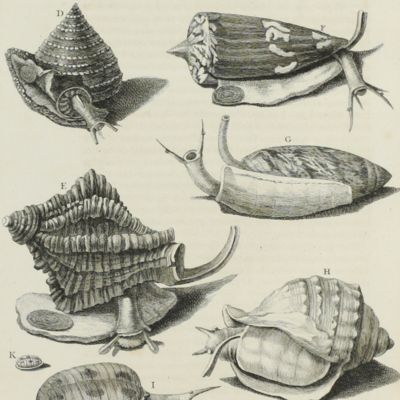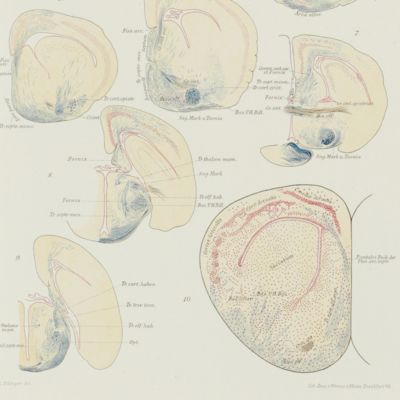Dezallier d'Argenville, A. J. D.
l'Histoire naturelle éclaircie dans une de ses parties principales, la conchyliologie, qui traite des coquillages de mer, de rivière et de terre; ouvrage dans lequel on trouve une nouvelle méthode Latine & Françoise de les diviser: augmenté de la zoomorphose, ou representation des animaux a coquilles, avec leurs explications. Nouvelle édition. Enrichie de figures dessinées d'après nature.
Paris, De Bure, 1757. 4to (28.5 x 22.8 cm). Title in red and black, with woodcut vignette, xxii, 394 pp.; half-title, second title in red and black, 84, cvii pp.; engraved frontispiece (plate 1) and another 40 [2-29, 1-3, 1-9] engraved plates. Contemporary mottled calf with gilt-lined edges. Spine with five raised bands, compartments rich gilt with floral patterns and brown morocco label with gilt title. Marbled endpapers. All edges red.
Antoine-Joseph Dezallier d'Argenville (1680-1765) advocate to the Parlement de Paris and secretary to the king, was a natural history writer with a keen interest in conchology and related sciences (notably palaeontology and mineralogy), on which he wrote several treatises including the present work. He also contributed or edited over 600 entries in the famous Encyclopédie of Denis Diderot and Jean le Rond d'Alembert. This works on shells, first published in 1742, became one of the most popular publications on shells of the period, being one of the most lavish books of the time, concentrating on the rarest and most beautiful examples of seashells, and helping spark a vogue for luxurious natural history books. The plates are beautifully executed. There are two issues of this Nouvelle edition. One (offered here) includes an Appendice with three additional plates of "Coquilles très rare", from the Lyonet collection, and additional text after page 379. The beautiful frontispiece is after a drawing by Boucher. According to the binder's instructions, the frontispiece is also Plate 1, thus counting 41 plates in all. First title page with an old library stamp and some thumbing. Some wear to board edges, dampstaining to the top margin of a few sections on a few plates just into the printed area, but mostly clean. A very good copy in an elegant contemporary binding. Caprotti I, p. 45; Dance, A History of Shell Collecting, p. 37; Nissen ZBI, 145 (under Argenville).





